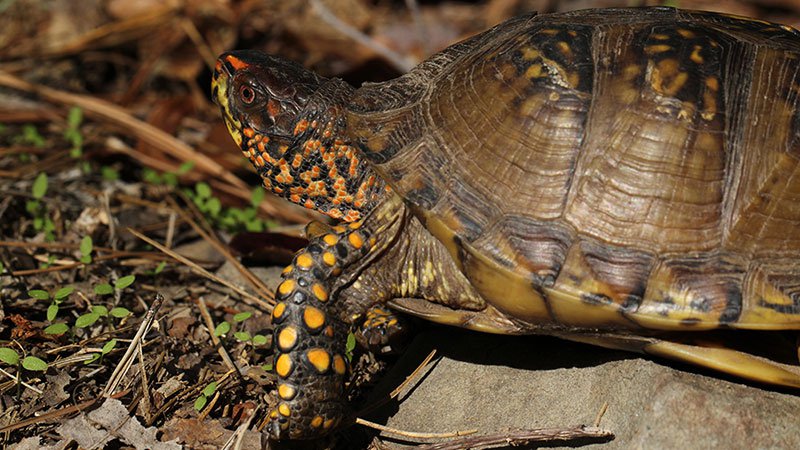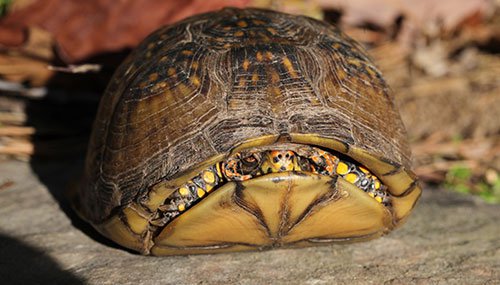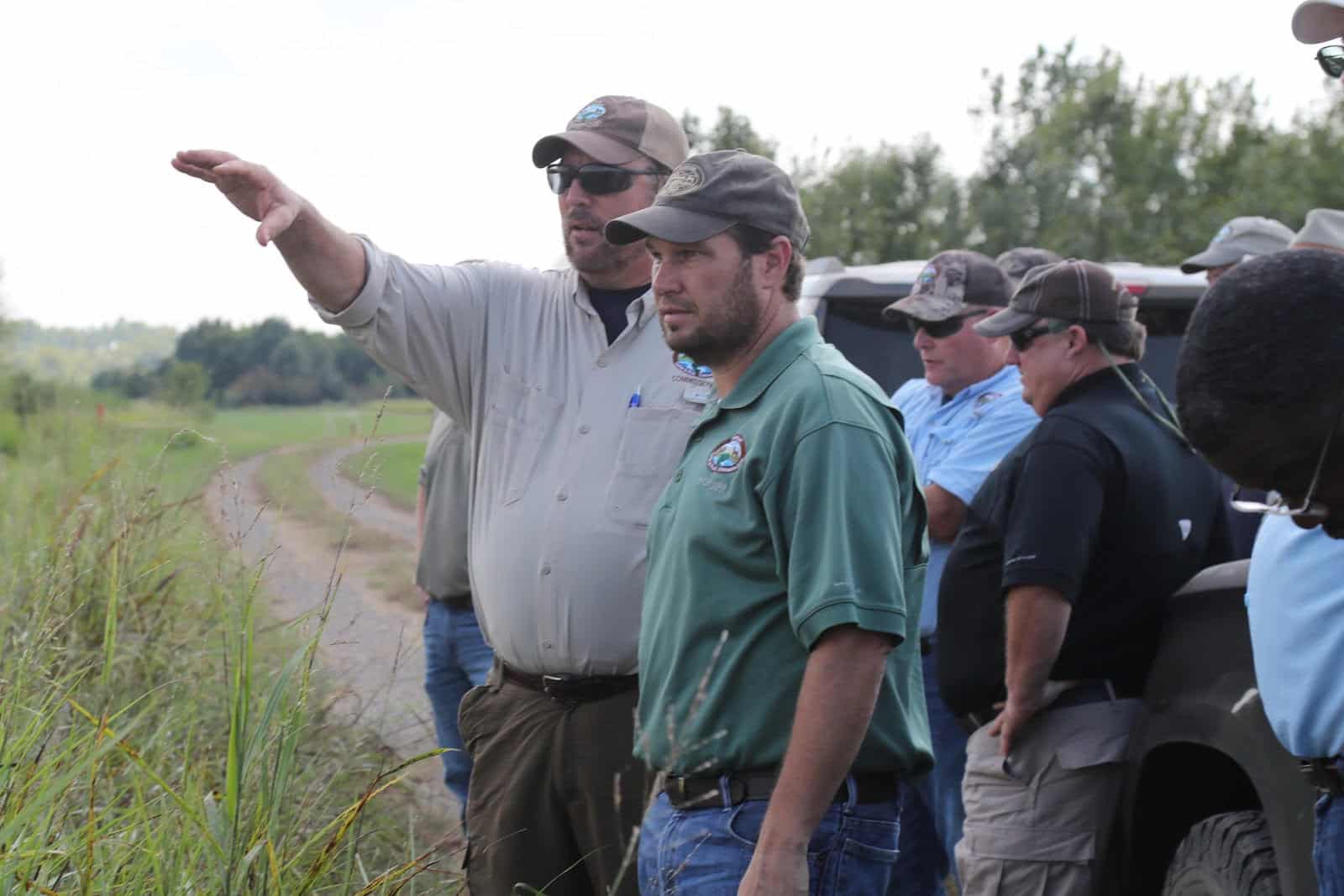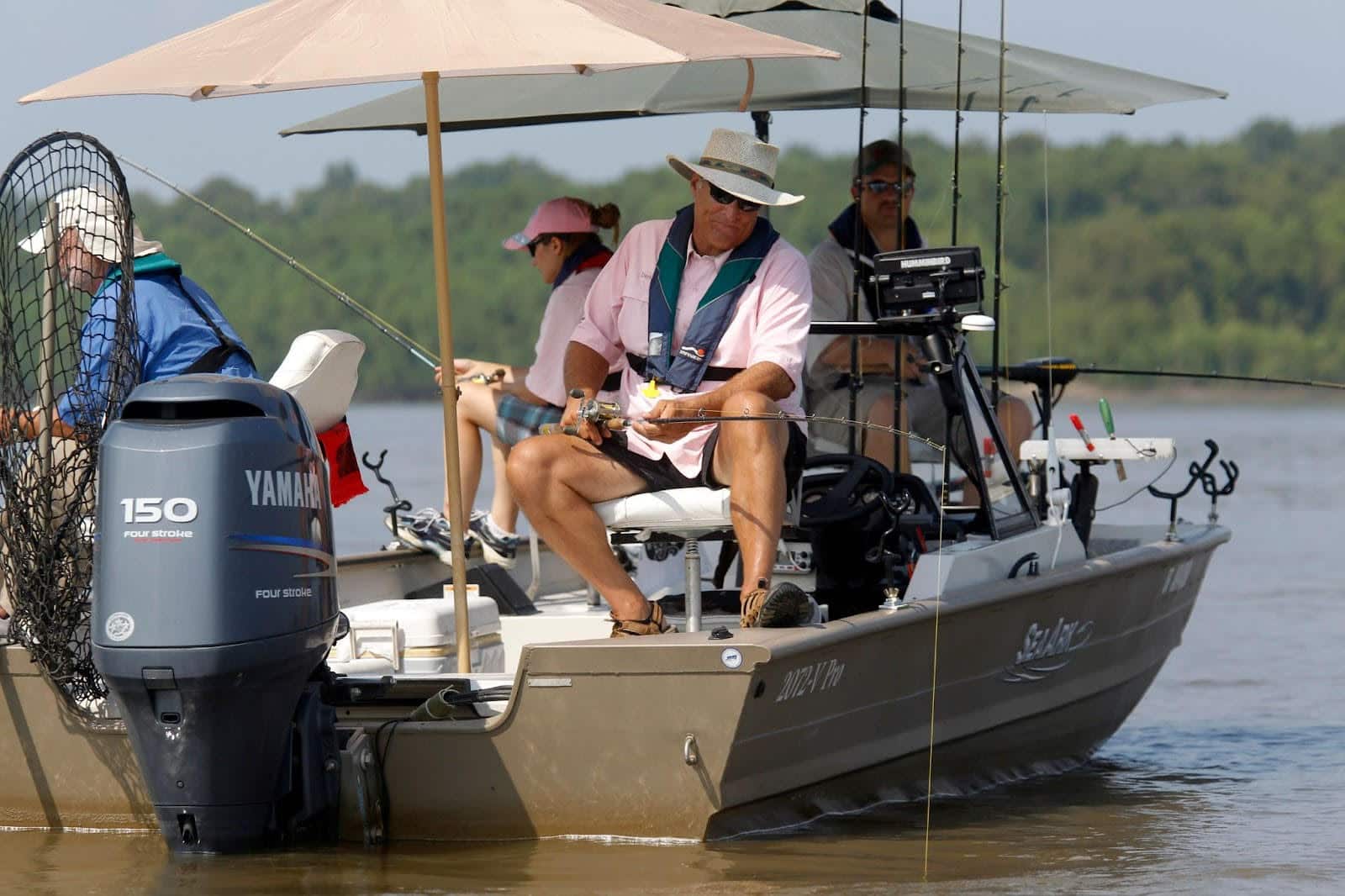Box turtles making moves across Arkansas
ON 04-15-2020

April 15, 2020
Randy Zellers
Assistant Chief of Communications

LITTLE ROCK — Arkansas is home to 16 species of turtle, but only two are land dwellers — the three-toed box turtle and the ornate box turtle. Box turtles are the only turtles in North America with a flexible hinge on their belly to close the front and rear halves of the shell tightly like a “box.”
The three-toed box turtle is found statewide in grassland and woodland habitats and is the most frequently encountered of the two species. The ornate box turtle is limited to prairie remnants in a formerly wider distribution in the Arkansas River Valley ecoregion, northwestern Arkansas, and the Grand Prairie region of the Delta. Both species have a high-domed shell and average about 5 inches long as adults. Three-toed box turtles are a uniform yellowish-brown and some individuals have radiating black markings on the upper shell (carapace), while the belly (plastron) is a uniform yellowish tan. Three-toed box turtles get their name for having only three toes on their hind feet. The ornate box turtle gets its name for the ornate yellow markings on the upper and lower shells against a black background.
Box turtles mature 5-10 years after hatching and breed from late April–October. Females dig a nest chamber in the soil in open areas to let plenty of warming sunlight reach the nest and lay from one to seven eggs. Females may nest two or three times per year. Incubation of the eggs takes approximately 90 days. Research has confirmed that box turtles can live more than 70 years, with a few cases of turtles older than 100. They eat plant and animal material; ranging from mushrooms, flowers, fruits, insects, earthworms, and all manner of invertebrates. Box turtles also have been reported eating small amphibians, reptiles and young rodents.
Box turtles live their lives within a “home range” of about 10-14 acres, and multiple adult turtles will have overlapping home ranges. They have a strong homing instinct, and, if removed from their home range, are capable of making long-distance treks back to their original home range. However, if a turtle is displaced many miles from its original home range it will likely never be able to return, especially if it must cross roadways, increasing its likelihood of being run over by a vehicle.
Given its rarity due to limited habitat, the Ornate Box Turtle is protected from take and possession by Arkansas Game and Fish Commission regulations. The AGFC does allow a person to possess a three-toed box turtle as a wildlife pet, but once removed from the wild, it is against AGFC regulations to release that turtle back into the wild without first relinquishing it to a wildlife rehabilitator for evaluation. This is intended to prevent the potential spread of diseases in wild turtle populations. Scientific reports in the last 20 years have demonstrated viruses and bacteria have caused significant disease outbreaks in wild box turtle populations in the eastern United States, and diseases continue to be a major concern in the conservation of reptiles and amphibians around the world. This re-enforces why it is illegal to bring many wild-caught animals (turtles, frogs, toads, etc.) from different locations into close contact with each other and release them back into the wild. This is precisely what occurs during turtle or toad races. Similar to the current COVID-19 crisis, where health and government authorities tell people to practice “social distancing” to help stop the spread of the virus, it is important to not gather live, wild-caught animals together under stressful conditions and then disburse them back out onto the landscape, possibly spreading a virus, fungus or other pathogen to wild populations.
Painting or coloring turtles’ shells also can be harmful, because some paints can be toxic, prevent absorption of sunlight needed for the turtle’s metabolism, or prevent the turtle from growing naturally if the hard coat of paint prevents the plates on the shell from being shed as the turtle grows. Paints or glued-on fake gems or other materials also can make a turtle stand out to potential predators.
Many well-intentioned people are kind enough to help a box turtle by picking it up from a roadway to get it out of harm’s way. However, they often transport them long distances away to be released in less traveled areas, where the turtle will wander in an attempt to return to its original territory, but that turtle can also be carrying a disease that could infect otherwise healthy local turtles. It also can be dangerous for people to get out on roadways to remove box turtles. If you do want to help the turtle cross the road, it is best to just move it to the other side. If a person feels like they must relocate the turtle it is better to move the turtle as short a distance from its point of capture as possible to release it.
Recent News

Former Chairman Neeley ‘got back more than I gave’
Jul. 28, 2025
Subscribe to Our Weekly Newsletter E-mails
Don’t miss another issue. Sign up now to receive the AGFC Wildlife Weekly Newsletter in your mailbox every Wednesday afternoon (Waterfowl Reports are published weekly during waterfowl season and periodically outside the season). Fishing Reports arrive on Thursdays. Fill in the following fields and hit submit. Thanks, and welcome!

